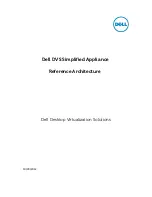
Avaya EAC Agent can be used in one of the following three forms:
• Installed EAC Agent — This agent contains two individual entities, a system service, and
the user interface application you can access from the Windows system tray. The EAC
Agent installs as a Windows system service. The advantages of using the Avaya EAC
Agent are system and user authentication, and single sign-on in Microsoft and Novell
environments.
The default installation paths for Avaya Installed EAC Agent are:
- c:\Program Files\Avaya\Avaya EAC Agent\ for 32–bit operating systems
- c:\Program Files (x86)\Avaya\Avaya EAC Agent\ for 64–bit operating systems
Important:
You require administrative rights to install, repair or remove the Avaya Installed EAC
Agent .
• EAC Agent Applet — This is a Java applet for web browsers that can run on Windows
and non-Windows operating systems.
• Downloadable EAC Agent —This agent is installed through the SNAS captive portal as
a Java Webstart application on the Windows platform and runs as Windows system tray
application. The advantages of using the Downloadable EAC Agent are "user
authentication" and "device compliance checking". Downloadable EAC Agent is not
supported by the Avaya VPN Gateway.
Avaya EAC Agent icons
There is an icon defined for each of the three Avaya Endpoint Access Control (EAC) Agent
states. The following table describes the color and state of each icon.
Table 1: Avaya EAC Agent icons
Color
State
Gray
There is no connection to the server. Avaya EAC Agent is in an
idle state.
Green
Avaya EAC Agent is connected to the server and compliant to
policies.
Green with red color X
Compliance has failed and a new error is reported.
Blue
The system session is logged on to SNAS and the system
policies are compliant.
Blue with red color X
The system session is logged on and the system policies have
failed.
Installing the Avaya Endpoint Access Control Agent
12 Avaya Endpoint Access Control Agent User’s Guide
May 2011













































